Energy-saving lamps
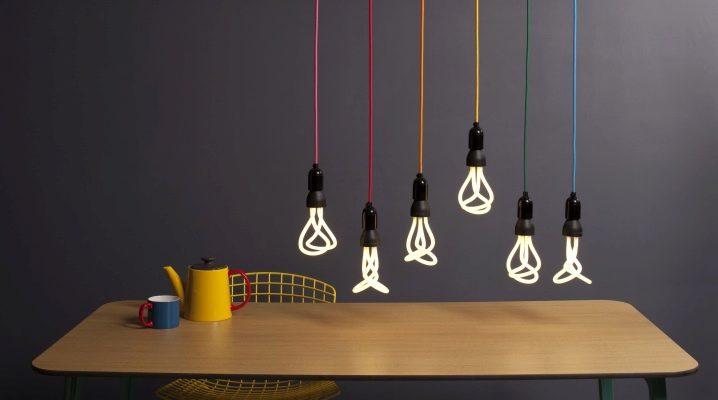
In the modern world, artificial lighting plays a huge role. Electric light surrounds us everywhere: at work, at home, in shopping centers, cafes and restaurants. In the context of constantly growing energy consumption and, at the same time, the increasing tariff for consumed energy, one has to think about reducing material costs without compromising the quality of lighting in the room. Energy-saving lamps successfully cope with this task.
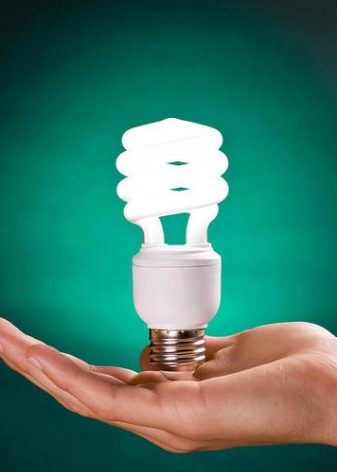
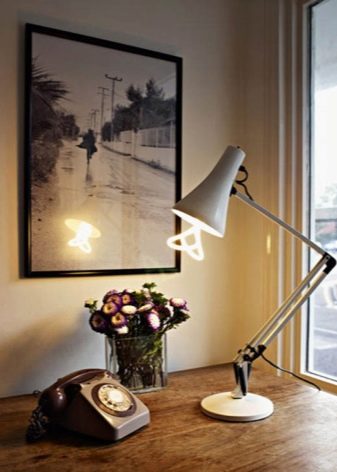
What it is?
For more than a century, the incandescent lamp familiar to everyone has illuminated our apartments, houses and various institutions. But recently, the energy-saving lamp is gaining more and more popularity. This is the same light bulb that has a greater light output compared to a conventional incandescent lamp, and the power consumption is less.
An uneconomical and energy-consuming incandescent lamp has not been in demand in European countries for a very long time. In Russia, it was stopped only in 2013.
It was replaced by an energy-saving model, which allows significant energy savings.
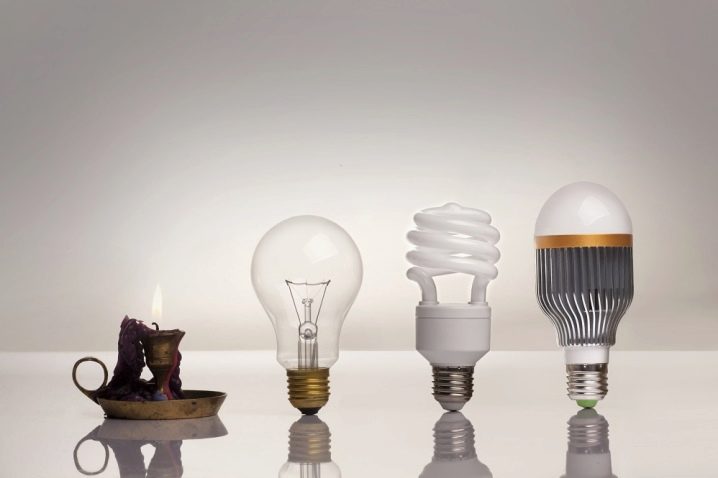
Characteristics, device and principle of operation
For the characteristics of any lamp, regardless of its type, there are certain parameters. These include luminous efficacy (efficiency), radiation intensity (light temperature) and efficiency.
The lamp consumes a certain amount of energy, measured in watts, and in response emits a luminous flux, measured in lumens. For 1 watt of consumed electricity, it emits a certain amount of light. If we take an ordinary 75 W incandescent lamp as a basis, then its efficiency will be about 900 lm. Energy-saving types with lower power have similar efficiency.
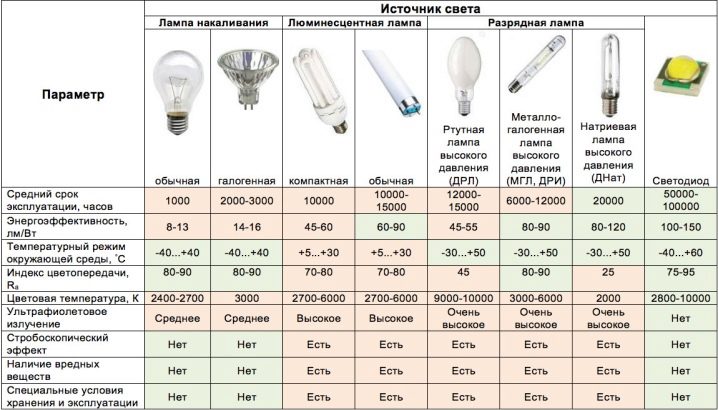
An important parameter is the color temperature, which indicates the wavelength emanating from the light-emitting element, measured on the Kelvin scale. It can be used to determine the color of the lamp. The soft white models have the lowest at 2700 K. The average is 4200 K for daylight, while the cool white models have the highest at 6400 K.

Another parameter that matters is the lamp life. This value depends on its type and design.
In order to compare all the parameters characterizing different types of energy-saving lamps, it is necessary to refer to the correspondence table.
|
Options |
unit of measurement |
Incandescent lamp |
Energy-saving lamps |
||
| Halogen | Luminescent | LED | |||
|
Power |
Watt |
75 |
45 |
15 |
10 |
|
Light flow |
Lm |
about 900 |
about 900 |
about 900 |
about 900 |
|
Luminous efficiency |
Lm / Watt |
≈12 |
≈20 |
≈60 |
≈90 |
|
Energy consumption per hour of operation |
kWh / hour |
0,075 |
0,045 |
0,015 |
0,01 |
|
Energy consumption (10 hours of work per day) |
Watt / year |
273,75 |
164,25 |
54,75 |
36,5 |
|
Life time |
Hour |
1 000 |
3 000 |
3 000 |
50 000 |
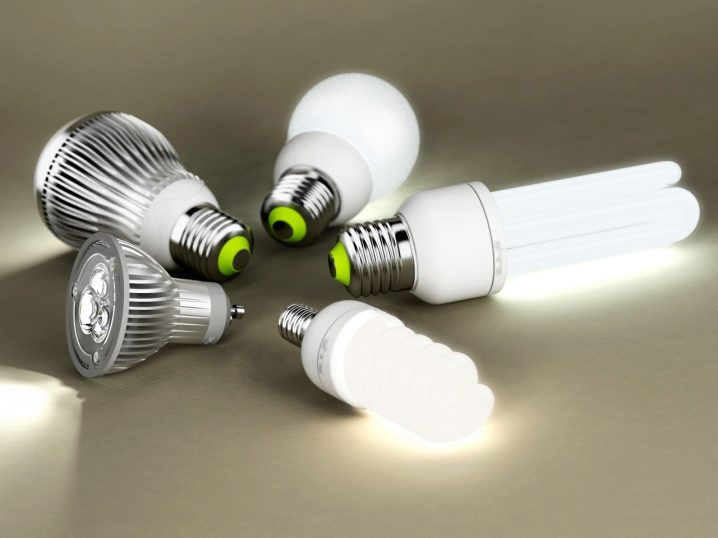
Each of the energy saving lamps has its own device.
The simplest device halogen lamp... It is very similar to an incandescent light bulb, but with some differences. The flask contains buffer gas vapors.
A completely different device has Fluorescent Lamp... It has a housing with an electronic start-up and power supply circuit connected to a gas-discharge flask.The flask contains electrodes located at different ends, an inert gas that increases the life of the product, and mercury vapor. The inside of this tube is covered with a layer of phosphor.
Its principle of operation is simple. The current flows to the electrodes, which begin to heat up. When a certain temperature is reached, a stream of negatively charged elementary particles emanates from them, which collide with mercury atoms. Due to this collision, ultraviolet radiation occurs, which, once it hits the phosphor layer, is converted into visible light.
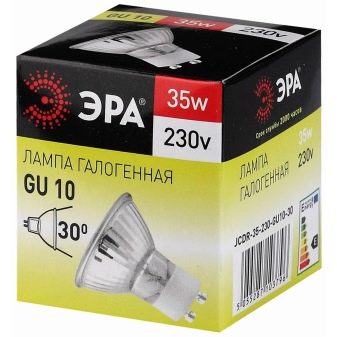
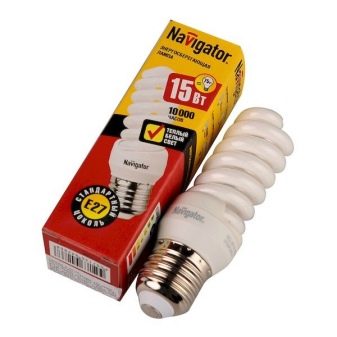
Phosphors are found in different fractions. From the chemical composition, or rather, from the ratio of activators, various types of phosphors are obtained, which have their own emission spectrum. The color of the lamp radiation can take on different shades: blue, pink, yellowish and other colors.
The operation of the lamp, namely the walls of the bulb, is influenced by the ambient temperature. Fluctuations in temperature will reduce the luminous flux of the lamp. Standard products do not reduce the luminous flux at an air temperature of 15 ° C to 40 ° C. The best light output occurs when the temperature is kept between 20-25 ° C.

The temperature regime for lamps with maximum power lies within slightly different limits.
The luminous properties of a lamp with a power of 125 W do not decrease if the ambient temperature ranges from -15 ° C to + 10 ° C. When deviating from these limits, the luminous flux decreases. The percentage of decline is different and depends on the direction in which the fluctuations occur.
LED models have a device different from luminescent types. The bulb contains LEDs connected in one circuit. The internal structure contains the driver. It is needed to convert AC mains voltage into DC. These design features affect the weight of the light bulb, which is in the range of 120-130 g. And this is 5, and sometimes 6 times heavier than an incandescent lamp.
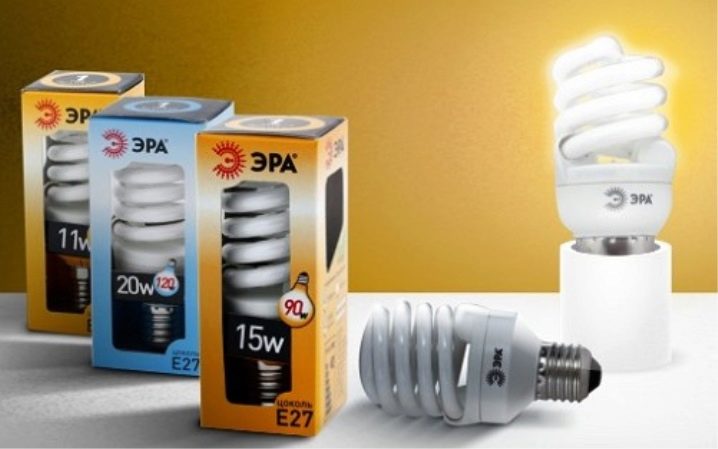
Differences from incandescent lamps
All bulbs have a coefficient of performance, or efficiency. For energy-saving models, it can reach 80% (depending on the design of a particular model). For a conventional lamp, the efficiency, as a rule, does not exceed 18%. If we take 100 watts of consumed energy as a basis, then an incandescent lamp can convert only 18 watts, the remaining energy heats up the spiral.
An important advantage of energy efficient devices is their durability. The service life of the fluorescent, and especially the LED model, is several times longer than the service life of a conventional light bulb. They do not require frequent replacement and therefore they can be safely installed in hard-to-reach places (high ceilings, staircases, niches).

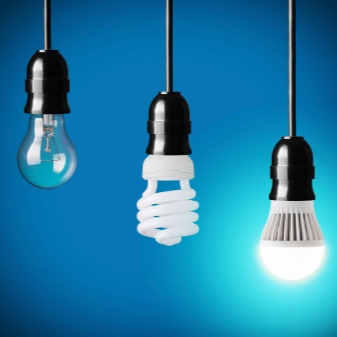
Energy-saving models, in comparison with the usual incandescent lamps, heat up less, and therefore are less fire hazardous... A higher power rating and less heating allow them to be installed in stretch ceilings, chandeliers, sconces and other complex structures. The heating temperature of economical options does not reach such limits at which it would be possible to melt wires and other plastic elements of the cartridge.
The undoubted advantage of economical options is the presence of several light shades, thanks to which you can choose a shade of your choice.
In addition, the presence of different light shades allows them to be used not only at home, but also in various industries.
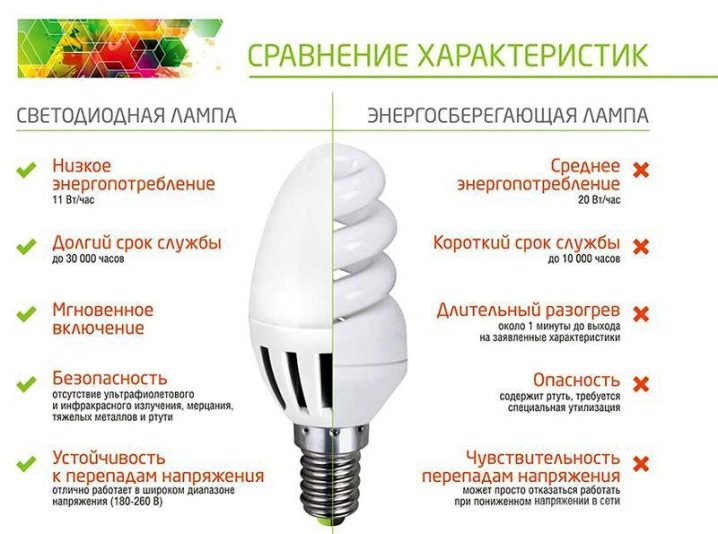
Unlike an incandescent lamp, there is a guarantee for any energy-saving lamp.
But there are also disadvantages to economical lamps.
The cost of these options is several times higher than the price of incandescent lamps. But given their service life and energy savings, the purchase of energy-saving products is more profitable for the budget.
Some types of energy efficient devices are harmful to health.
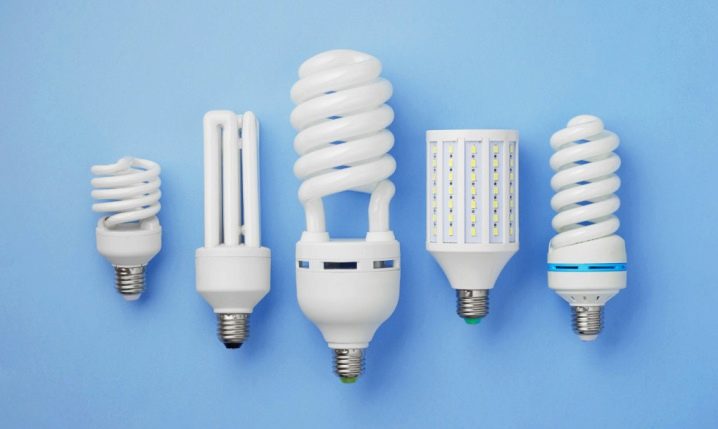
First of all, people who have increased sensitivity to light suffer. Prolonged exposure to energy-saving lamps can exacerbate various skin diseases. Such lamps are also dangerous for people with epilepsy, as they can provoke an attack of migraine and dizziness.
Do not forget about the stroboscopic effect of economical lamps. The glow intensity of such a lamp changes a hundred times in 1 second at a current frequency of 50 Hz, that is, the lamp lights up and goes out a hundred times per second (flickers).
Flickering is not noticeable to the human eye, but it has a negative effect on the human brain, as a result of which the actual picture of movement is distorted.
Luminescent models contain mercury vapor. Its content ranges from 1-70 mg.
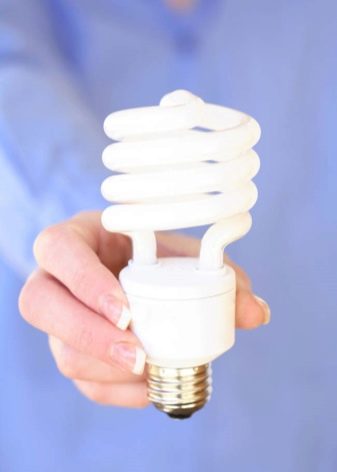
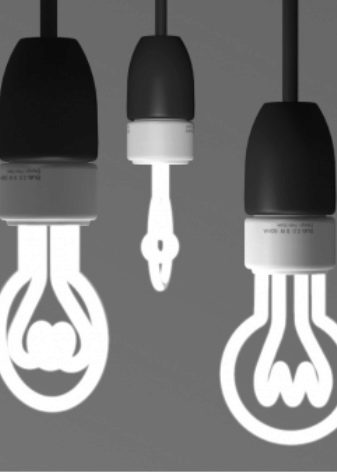
Views
Today there is a wide variety of types of energy-saving lighting devices. They are divided into products for the home, industrial enterprises and specialized options that perform specific functions.
For industrial and industrial premises, fluorescent lamps with a blue tint of luminescence are used, which have a high luminous efficiency, the color temperature of which does not exceed 6500 K. In rooms where the requirements for color rendering are increased (museums, exhibition halls), specimens with good or excellent color rendering are installed.
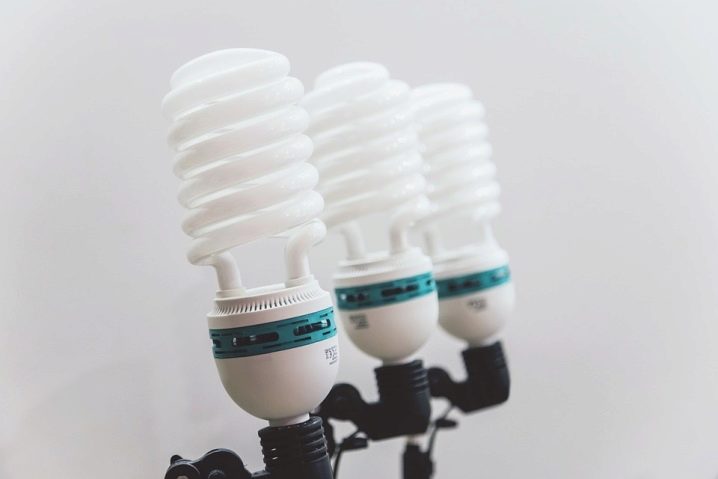
For the home, compact models are most often used with a color temperature not exceeding 6000 K. Natural light lamps give a soft, sunny white hue. Color rendition can be good, or it can be acceptable, it all depends on the numbers indicated on the package.
The first digit shows the color rendering index. The value 100 is considered to be an ideal, and the closer the value is to this number, the better the lamp color rendering. The remaining two digits show the color temperature. Products with the first digit 8 or 9 have good color rendering.
Warm white light bulbs can be used for both industrial and home environments. Instances emitting white light with a pink tint are used in catering establishments, and those emitting warm white light with a yellow tint are used in residential premises.
For bedrooms and kitchens, non-blinking lamps with a color temperature of about 2700 K are suitable.
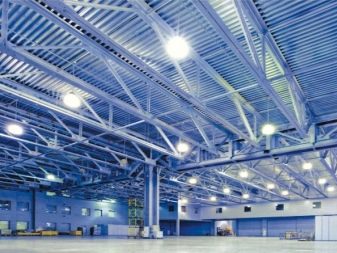
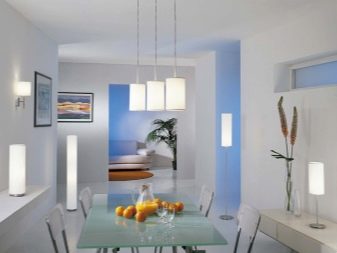
In everyday life, lamps can be used in chandeliers and various lamps. Some types can be supplied with dimmers. These devices are designed to smoothly adjust the brightness of the lighting. Models with dimmers are equipped with a special unit, which manufacturers warn consumers about with special marking. Dimmable lamps are very convenient to use, if necessary, the light can be dimmed or vice versa, made brighter.
For home use, some manufacturers have developed bulbs that are unusual in shape and function. There are models with various built-in modes that can be controlled via Wi-Fi. In addition, the designers have developed models that do not need a plafond and a chandelier. These lamps have an unusual shape and therefore are at the same time a luminaire.
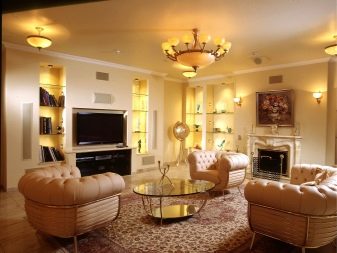
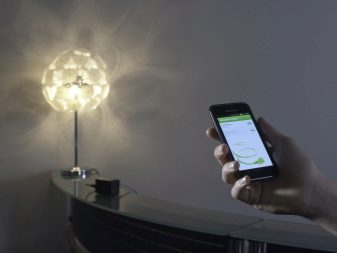
Very often, energy efficient lighting fixtures flicker when the lights are off. There may be several reasons for this. This phenomenon is associated with an LED illuminated switch. By removing the LED, you can eliminate the flickering.
Mirror models are used to accentuate the luminous flux. Most often, these options are used in ceiling, spot and table lamps.
There are options for street lighting.
Such lamps must have a high luminous flux and a long service life.
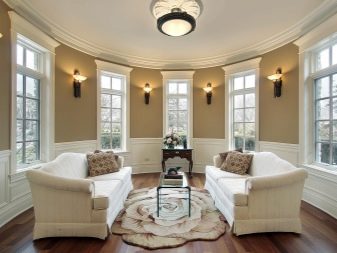
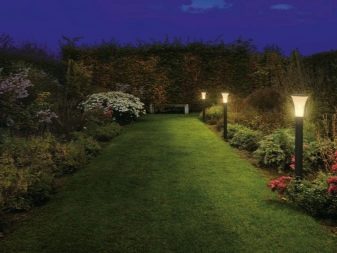
Classification
Energy-saving light sources include two types of lamps: fluorescent and LED. Conditionally, halogen models can be attributed to economical options.
Luminescent models
Luminescent models are divided into linear and compact versions.Both options have an identical principle of operation, but differ in some respects.
The linear models are larger than the compact versions and are categorized into straight, ring and U-shaped models.
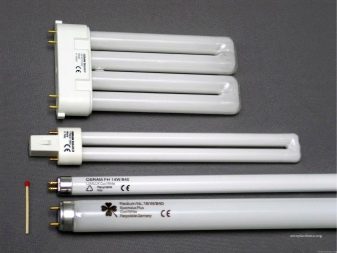
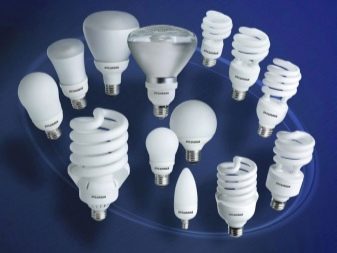
Straight models are based on a long glass tube with metal rods fixed at the ends, thanks to which the tubes are connected to the network using terminals. These devices differ in the diameter and length of the pipe, and there are also differences regarding the width of the basement element. The ballast for this version is located on the body, while for compact models it is located in the base.
Typically, energy consumption depends on the size of the product. The larger the device, the higher the flow rate. Large-sized devices are used to illuminate production halls, offices, large halls and other premises.

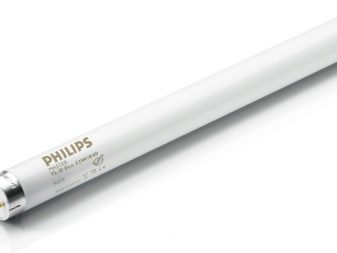
Compact luminescent models have a slightly different bulb shape. As a rule, this variety is characterized by either an arched or a spiral bulb, which can be used in chandeliers and other lamps. Models with a spiral bulb differ from others in their higher cost, since the manufacturing technology is somewhat more complicated compared to other fluorescent lamps.

LED options
The most modern light source is an LED lamp, as it consumes the least energy among energy-saving devices and is by far the safest in operation.
In addition to the LEDs located on the board and the driver, this type of design includes a radiator that helps to cool the LEDs and a diffuser. The last element is required to expand the light beam. After all, the angle covering the area when illuminated does not exceed, as a rule, 60 degrees.
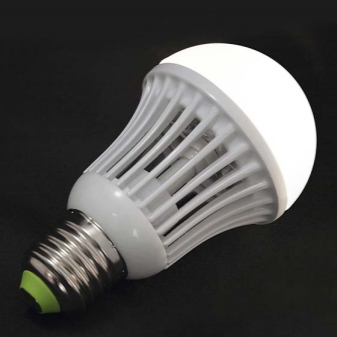
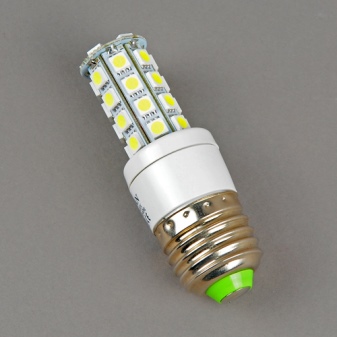
Shapes and types of plinth
The base is an element of the lamp. With its help, it is attached to the cartridge in the lighting device, as well as an electric current is conducted through the contacts located outside. Plinths vary in type and shape.
The most common types are threaded (E) and pin (G) plinths, which have their own markings. Threaded plinths come in various sizes, where the last two digits indicate the plinth diameter in millimeters. The most common types are E-27 and E-14. The round shape of the bulb is the most common, but there are lamps with a small base, in which the bulb has a very unusual appearance. "Candle in the wind" with E14 base is suitable for open luminaires without shades.
Pin bases come in a variety of shapes. Long fluorescent lamps have a small rounded base, while compact models tend to have flat base shapes. The number of pins varies from 1 to 5 pcs.
The most common two-pin plinths, which are most often equipped with recessed spotlights.
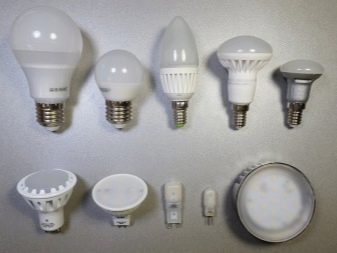
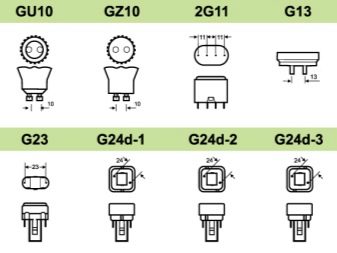
Colors
Economy lamps are used in a variety of industries. As is already known, the color of the lamp depends on the phosphor applied to the inner glass surface of the lamp. But sometimes, in addition to the phosphor layer, the bulb itself influences the color of the lamp, which can be made of glass of different colors. Most often, such models are used for decorative color lighting.
But there are models that are used only in narrow industries. For example, forensic science uses an assisted model that detects various biological traces. This model belongs to luminescent types, but has a significant difference, namely the black color of the bulb. The model has its own name, Wood's lamp.
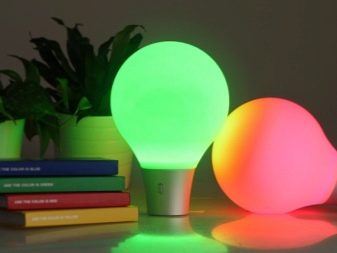
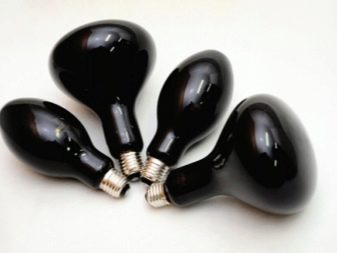
Popular brands rating
There are many manufacturers of electrical energy-saving products on the Russian market.
- The most famous is a Dutch company Philips, which was one of the first to put powerful energy saving lamps on the market.This company produces them in a wide range and of excellent quality.
- German company Osram has been manufacturing lamps since 1985.
Their models are characterized by a long service life and can withstand a large number of restarts.
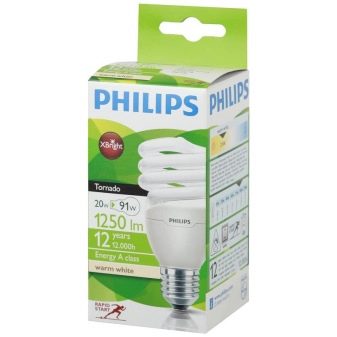
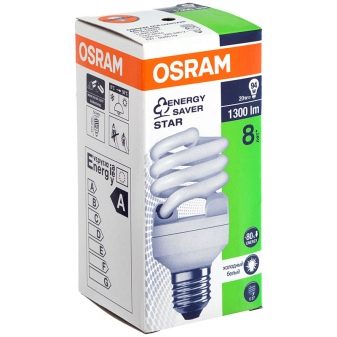
- Companies Navigator and Camelion appeared on the Russian market not so long ago, but have already managed to conquer their consumer. Camelion produces three types of energy saving lamps that are suitable for all types of home lighting and are sold at an affordable price.
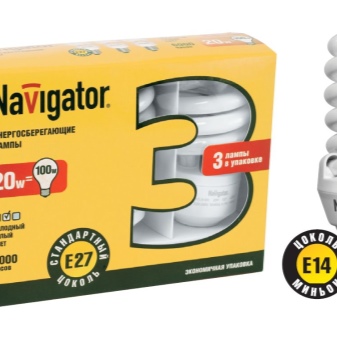
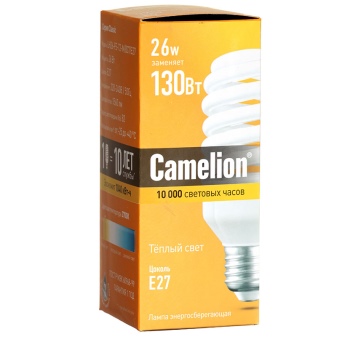
How to choose?
There are many points to consider when choosing a lamp. First of all, the power of the lamp, the type of lighting fixture and its location.
The power should correspond to the type of your luminaire, it is better if it is less than or equal to the declared power of the device. LED options are more suitable for built-in spots, since they have insignificant heating and acceptable power. For a chandelier, you should not choose bulbs above 12 w if it is fluorescent and more than 7 w if it is LED.
When choosing a lamp for outdoor lighting, in addition to power, it is worth considering the not always favorable environmental influences. In the passport, manufacturers indicate the level of protection against moisture, ingress of solids, as well as the temperature at which the lamp will work without reducing the luminous flux.
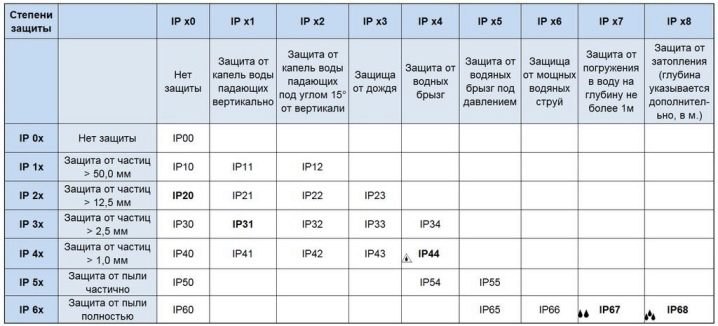
Operating rules and ways to increase service life
In order to increase the life of an energy-saving lamp, you need to know certain rules.
When installing into the cartridge, it is better to hold on to the body, especially for fluorescent lamps, the bulb of which is represented by thin tubes. You shouldn't turn them on and off often. It is better not to turn off models of low power at all or use options that have a dimmer.
Do not install the devices in closed lighting fixtures, as there is a possibility of overheating of the lamp, which negatively affects the service life.
There are a huge number of economical lamps on the market at a variety of prices.
Too cheap lamps do not always last for the stated time, and therefore it is better to buy products from well-known brands in specialized stores.
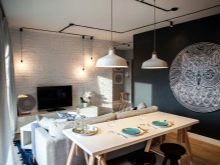


How to dispose of?
Any lamp has its own service life, at the end of which they must be disposed of. Disposal of fluorescent lamps can be difficult. Despite the fact that used mercury-containing lamps belong to the first class of hazard, and not to household waste, in most settlements there are no specialized points for the reception and disposal of these devices.
Since the bulb is made of glass, there is a possibility of damage. The broken fluorescent lamp must be carefully collected in a container of water, after putting on gloves, after which it is necessary to call the Ministry of Emergencies, and ventilate the room for several hours.
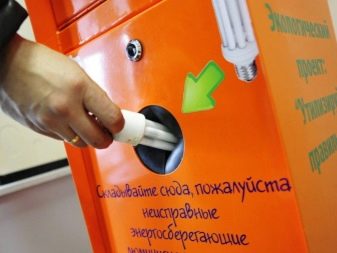
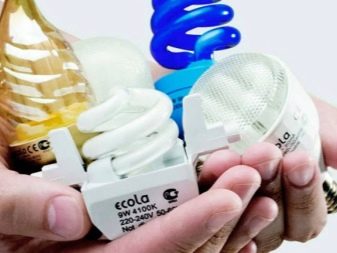
You will learn more about energy saving lamps in the following video.













The comment was sent successfully.